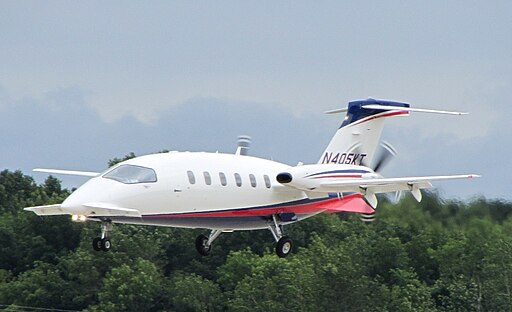PASSENGER AIRCRAFT
PIAGGIO AVANTI P180 II
Aircraft Summary
The Piaggio Avanti P180 II is an Italian executive transport aircraft with twin turboprop engines mounted in pusher configuration. The aircraft is capable of transporting up to 9 passengers.
History and Features
A1980s wave of new-generation planes, developed to appeal to Fortune 500 clients, included Piaggio’s Avanti and Beech Aircraft Corp.’s very similar Starship.
Beginning in 1983, Gates Learjet partnered with Piaggio to develop a fuselage for the new aircraft (referred to as Gates Piaggio GP-180). Learjet’s design influence can be seen in the steeply raked windshield and the two large ventral delta fins under the tail. At high angles of attack these delta fins provide a nose-down pitching moment and help to avoid a potential stall, and they increase stability in flight by damping yaw and Dutch roll.
Gates Learjet’s financial problems ended their collaboration in January 1986, but Piaggio continued the project, and the first prototype flew on 23 September 1986. The P.180 Avanti received Italian certification on 7 March 1990 and American certification was obtained on 2 October 1990.
The first 12 fuselages were manufactured in Wichita, Kansas, then flown to Italy for final assembly. Avanti Aviation Wichita ran out of money in 1994; the project languished until a group of investors led by Piero Ferrari became involved in 1998. The 100th aircraft was delivered in October 2005 and the 150th in May 2008. Piaggio reported that, as of October 2010, the Avanti and Avanti II fleets had logged over 500,000 flying hours.
The Avanti is marketed as being faster than other turboprops and many midsized jets, with cost efficiency as much as 40 percent better than market-competing jets, as a result of less drag and a lower fuel burn rate.
An improved Avanti II obtained European and U.S. certification in November 2005. Six months later, 70 planes had been ordered, including 36 by Avantair. Avanti II received type approval for Russia in 2011. The Avanti II featured uprated Pratt & Whitney Canada PT6A-66B turboprop engines and flies about 18 km/h (11 mph) faster, with better fuel economy; and an all-new “glass panel” avionics suite from Rockwell Collins reduced cockpit clutter. In addition to heading, attitude and navigation information, flat panel color liquid crystal displays add collision avoidance (TCAS), ground proximity (TAWS) and real-time graphic weather depiction.
Aircraft of similar role, configuration and era are: Beechcraft Super King Air, Beechcraft Starship.
Charter, lease or sale we’ll find the aircraft that fits your mission.
OVERVIEW
PASSENGERS*
9
CRUISE SPEED
610 kph / 379 mph
SPECIFICATIONS
CABIN LENGTH
4 m / 13’1″
CABIN WIDTH
1.88 m / 6’2″
CABIN HEIGHT
1.75 m / 5’8″
LUGGAGE SPACE
1.25 m³ / 44 ft³
ENCLOSED LAVATORY
Yes
ENTERTAINMENT CENTRE
No
PRESSURISED CABIN
Yes
COMPARABLE AIRCRAFT
Aircraft of comparable role, configuration and era
- Beechcraft Super King Air
- Beechcraft Starship

